Timing is everything. I’m sure you’ve heard this many times. Timing is the most important factor when sending a follow-up email. It can decide if your message receives a positive response or ends up in the trash. The key to timing your emails perfectly is knowing your audience. In this blog, we’ll discuss when to send a follow-up email.
Most commonly, sales and marketing people wonder about what is the best time to send follow-up emails. You want your follow-up emails to get someone’s attention, without showing any signs of desperation at the same time.
So how do you achieve this seemingly difficult feat? Well, the answer is outlined in this post. Here we will cover:
Table Of Contents:
1. How to perfectly time your emails?
2. How often you should send a follow-up email?
3. Conclusion
4. FAQs relevant to sending follow-up emails
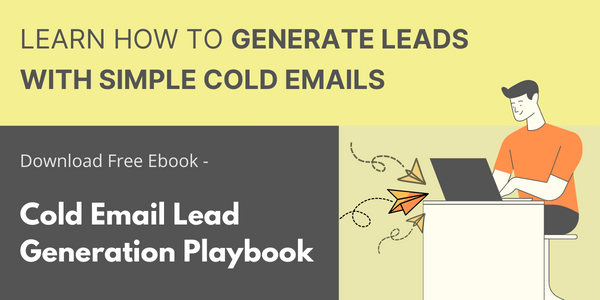
How to perfectly time your emails?
The answer comes in two parts –
- First, what day/time in the week is best for getting someone’s attention?
- Second, how often to email customers and after how many days you should follow up without annoying someone.
a. What is the best time to send an email in a day?
The time of day you send follow-up emails can make or break the relationship with your audience.
Sending emails at the wrong time will spike your unsubscribe rate. But if you send them at the right time, you can turn prospects into paying customers and first-time buyers into repeat customers.
The time of day is just as important as the day itself. You don’t want your follow-up email to linger in your customer’s inbox, waiting to be read and replied to.
According to SEOpressor, follow-up emails should be sent when people aren’t too busy to get a response. You also want to catch them when their mind is fresh and uncluttered. The best time to do this is 10 am in the morning.
Afternoon, at around 2 p.m., also seems promising. It’s toward the end of the workday, at a time when people are getting restless and looking for distractions.
Another high success rate occurs in the evenings, from 8 pm to midnight. With so many distractions on the internet these days, many people try to keep their mornings open and avoid marketing emails in order to be more productive. The evening then becomes the perfect time to check their inboxes for other, non-work-related emails.
b. What is the best day to send an email in a week?
Working hours vary from person to person, here are some general observations regarding how people work through the week.
Mondays – Monday mornings are often reserved for internal meetings, planning the week, and dealing with anything urgent that happened over the weekend. It’s not the best day to send a follow-up email and expect a reply.
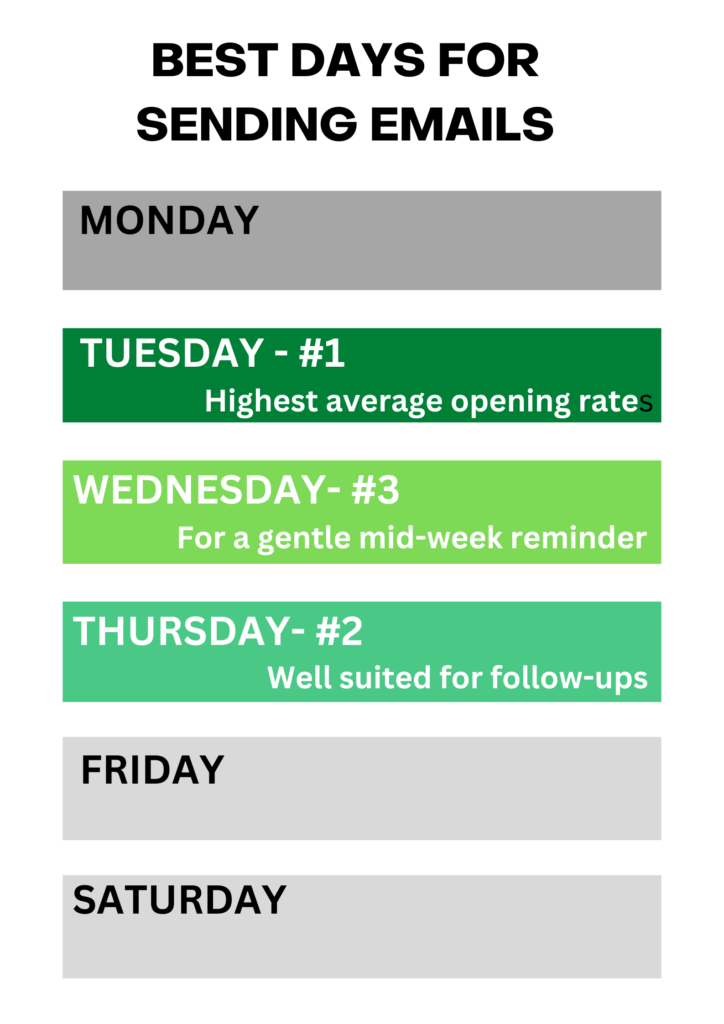
According to Coschedule, Tuesday is the most popular day to send emails, with the highest open and click-through rates.
The second-best day to send an email is Thursday. If you’re going to send an initial email and a follow-up, you can send the first email on Tuesday and the follow-up message on Thursday.
Wednesday ranked as the third-best day for sending emails, clinching a win for the middle of the week.
Weekends seem to be the worst days when it comes to follow-up email open rates. A Klaviyo study found that the number of emails sent on weekends is significantly lower than on weekdays.
How often you should send a follow-up email?
Now we already know when should we follow up and what our follow-up email should look like. Next, let’s look at how often to email and follow up with customers. Where is the line between persistence and stalking?
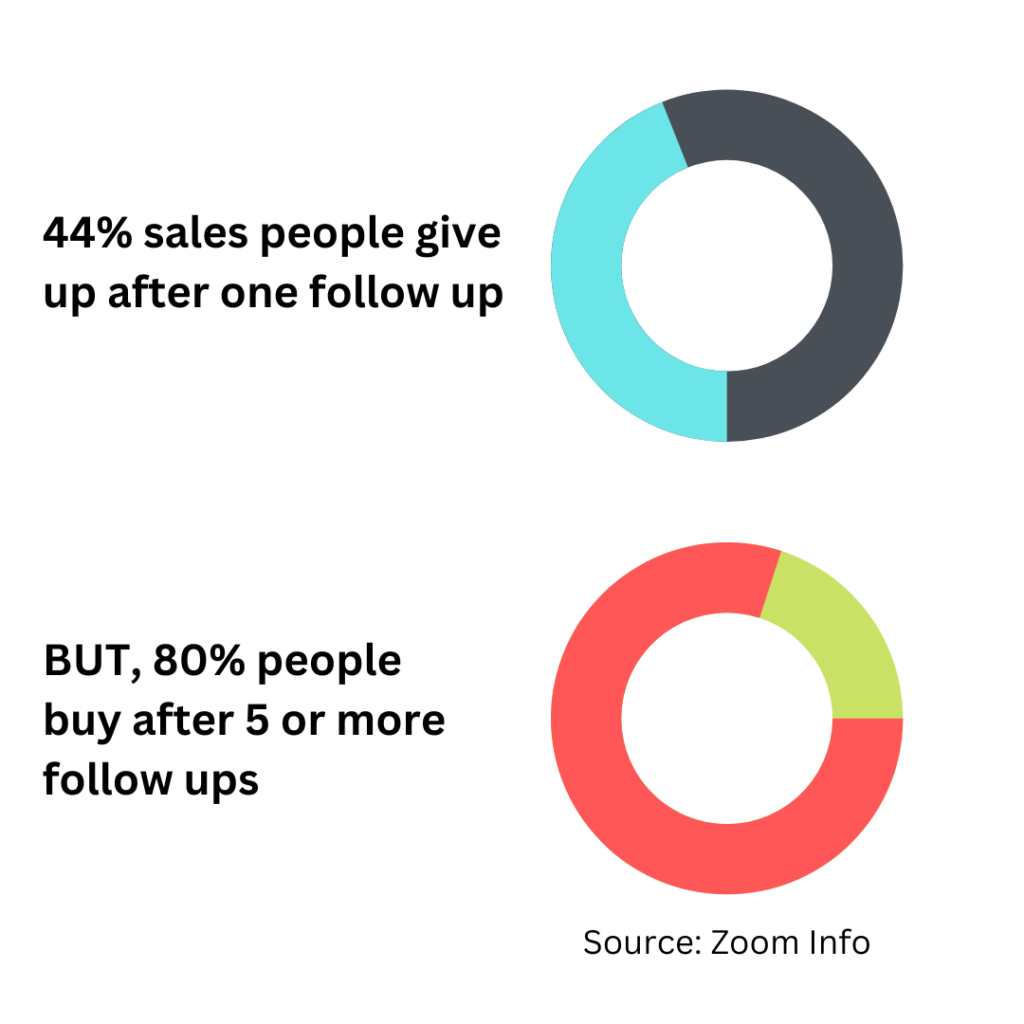
According to Zoominfo, 44% of salespeople give up after only one follow up. Additionally, 92% of salespeople give up after four “no’s”, but 80% of prospects say “no” four times before they say “yes”.
Average email cycle time
If you reach out completely cold and have never interacted with the prospect, follow up a maximum of six times. You really don’t have the type of relationship that gives you permission to do much more than that.
If you already had some kind of interaction and that interaction was not a clear, definite NO, then follow up as long as it takes to get a response. Never stop till you get a response.
Steli Efti suggests an email follow-up a sequence like the following:
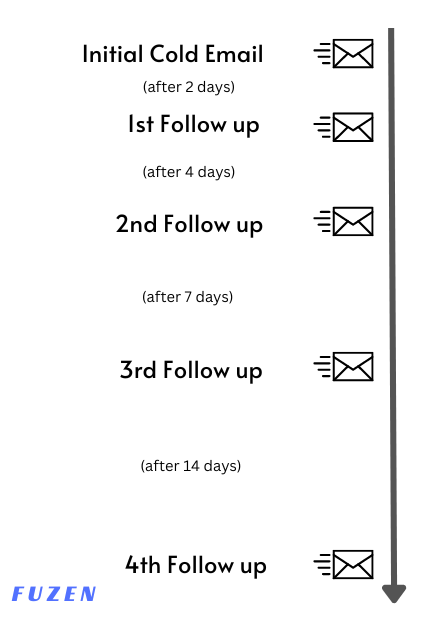
First, follow-up on Day 1 (+2)
Second Follow up on Day 3 (+4)
Third Follow up on Day 7 (+7)
Fourth Follow up on Day 14 (+14)
Fifth Follow up on Day 28 (+30)
Sixth Follow up on Day 58 (+30)
… (from there on once a month).
Designation of your prospects
Everyone is different and no one likes to generalize, but entrepreneurs and people at the top of organizations work different schedules than other people.
They are more likely to check their emails frequently, every day of the week. No matter what they are doing, their email is their window to how their company is functioning. They’ll open every email they receive, even if it is just to check there hasn’t been a disaster.
At the same time, however, CXO-level employees’ attention is very likely to be split between several important things happening at the same time. So if you follow up with them too many times, you may very well come across as annoying.
Find a balance in your follow-up timing accordingly. Ask simple, meaningful questions in follow-up emails so they can easily answer them.
Unless your client is a founder or executive, chances are they aren’t checking their work emails from home at night or on weekends. They may not even have access to their emails when not on work premises. For the biggest impact, you are limited to emailing during regular working hours.
You can follow up more frequently with them since they are most likely working on projects or activities directly related to your offer. So they would be less likely to get distracted or annoyed.
Top tips for sending a follow-up email
We have got some great tips to help you supercharge your cold email campaigns.
- First and foremost, timing is key. You definitely don’t want to come across as too pushy or aggressive, but you also don’t want to wait too long and miss out on a potential opportunity. A good rule of thumb is to wait 3-5 business days before sending a follow-up email.
- Another tip is to make sure to reference your previous email and add value to the conversation when writing your follow-up email. You can share additional information or resources that you think might be helpful, or ask a specific question that wasn’t addressed in your previous email.
- Also, use a catchy subject line that will grab the recipient’s attention. Keep it short and sweet, but make sure it’s relevant to your message.
- Personalization is key in your follow-up emails as well. Try to reference specific details from your previous conversations and show that you’ve done your research.
- Finally, don’t be discouraged if you don’t get a response right away. Follow-up emails are a long game and it often takes several attempts before you get a response. Keep providing value and building relationships, and eventually, you’ll see results.
Conclusion
These are the guidelines for when and how often to send follow-up emails. Don’t forget to analyze your audience and run A/B tests to find out what works best for your audience. While doing that, don’t forget to use these data as a starting point.
If you never want to miss a follow-up email, you can switch to email automation tools and set up a cold email sequence and automated follow-ups. SafeMailer offers a mail merge tool connected to Gmail and Google Sheets which you can use to set up smart workflows to automate your follow-up emails.
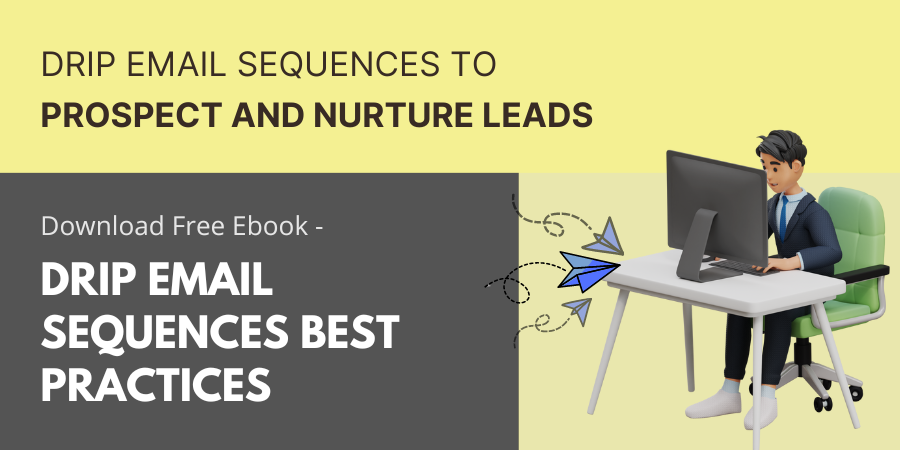
FAQs relevant to sending follow-up emails
Q: Why should I send a follow-up email?
A: Sending a follow-up email can be helpful in ensuring that your original message was received and to prompt the recipient to take action. It can also be a good way to demonstrate your professionalism and persistence.
Q: What should I include in a follow-up email?
A: Your follow-up email should include a brief reminder of the original message and a clear call to action. You can also include any new information that may be relevant to the recipient.
Q: How often should I send a follow-up email?
A: You should be careful not to send too many follow-up emails, as this can be seen as spammy or annoying. One or two follow-ups are usually enough, but the frequency and timing will depend on the context.
Q: How can I make sure my follow-up email is effective?
A: To make sure your follow-up email is effective, keep it concise and to the point, and avoid being pushy or aggressive. Be polite and professional, and make it easy for the recipient to take action by providing clear instructions and a deadline if applicable.
Q: What if I don’t receive a response to my follow-up email?
A: If you don’t receive a response to your follow-up email, you may want to try reaching out through another channel or following up again after a bit more time has passed. Alternatively, you may need to accept that the recipient is not interested or not able to respond at this time.

Leave a Reply